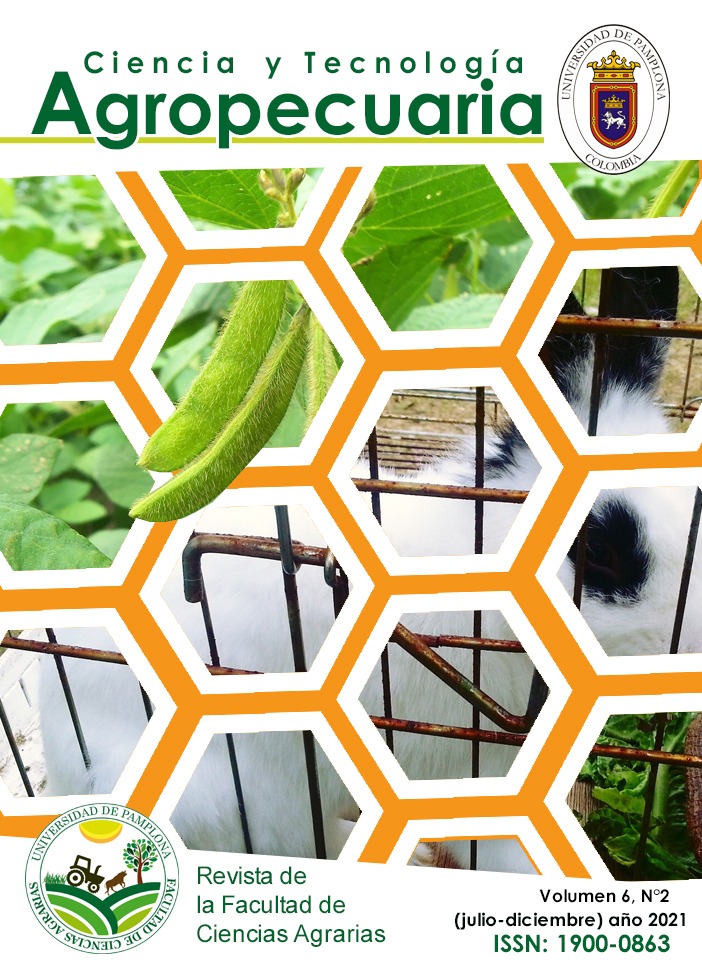Comportamiento de las precipitaciones en la bioregión de la Cordillera de la Costa Central de Venezuela
DOI:
https://doi.org/10.24054/cyta.v6i2.2307Palabras clave:
Cambio climático, precipitación, bioregión, ARIMAResumen
El cambio climático está impactando de manera dramática la economía, las comunidades y los ecosistemas, lo cual ocasiona graves pérdidas tanto materiales y humanas, como de biodiversidad. Los países más pobres, los menos preparados para enfrentar los cambios rápidos del clima, serán los que sufrirán las peores consecuencias del fenómeno.El cambio climático se puede apreciar en el ambiente, está ocasionando cambios en el ciclo hidrológico en algunas regiones de América Latina, con alteraciones de la pluviosidad de manera irregular e impredecible. En Venezuela, los modelos climáticos globales sugieren una disminución generalizada de las precipitaciones. Una disminución de la captación de agua cuya fuente principal son las cuencas, afectaría su disponibilidad para el consumo humano y con fines de riego afectando los costos de tratamiento y limitando el desarrollo de las comunidades. Por tanto, se decidió estudiar la influencia del cambio climático en el comportamiento de las precipitaciones en la bioregión de la Cordillera de la Costa; en esa zona se encuentran importantes ciudades del centro del país, en las que se desarrollan actividades industriales y agropecuarias. También cuenta con 6 parques nacionales. La data meteorológica estudiada, se basó en la información suministrada por el Instituto Nacional de Meteorología e Hidrología (INAMEH), Aunque, sólo 10 estaciones meteorológicas, de 20 estaciones pluviométricas ubicadas en la bioregión, presentaron 30 años de registro continuos, debido a serias deficiencias de registro o inoperatividad. A las series históricas se le aplicó análisis estadísticos descriptivos e inferenciales, encontrándose que son series estacionales que requirieron de la aplicación de auto correlaciones y modelos ARIMA, validados por la prueba de Ljung-Box, basada en portmanteau test, el de Mann Kendall y la pendiente de Sen. Se pudo determinar que el comportamiento de las precipitaciones estudiadas no está influenciado por el cambio climático.
Descargas
Referencias
Academia de Ciencias Físicas, Matemáticas y Naturales, (ACFIMAN). (2018). Primer Reporte Académico De Cambio Climático de Venezuela. Recuperado de: http://appportal.rect.ucv.ve/vrac_pasantias/vrac_ucv/documentos/PRACC 23_01_2018.pdf.
Alencar, K. Silva, R. (2017). Tendencia pluviométrica y concentración estacional de precipitación en la cuenca hidrográfica del río Moxotó, Pernambuco, Brasil. Universidad Nacional, San José, Costa Rica. Revista Geográfica de América Central, vol. 1, núm. 58, pp. 295-313, 2017. Recuperado de: https://www.redalyc.org/journal/4517/451750038021/html/.
Alvarado, A (2015). Bioregiones de Venezuela. Recuperado de: https://sites.google.com/site/regionesdevenezuela/home.
Asociación Venezolana para el Agua. (2011). Situación de los Recursos Hídricos en Venezuela. Caracas. 53p.
FAO. (2012). Adaptación al cambio climático y mitigación de sus efectos para reducir la vulnerabilidad de las poblaciones y de los sectores agrícola, ganadero, pesquero y forestal, (3), 1–8. Recuperado de http://www.fao.org/3/a-i3003s.pdf.
Guenni, L. Degryze, E. Alvarado, K. (2008). Análisis de la tendencia y la estacionalidad de la precipitación mensual en Venezuela, Revista Colombiana de Estadística. vol.31 no.1 Bogotá Ene./Junio 2008. Recuperado de: http://www.scielo.org.co/scielo.php?script=sci_arttext&pid=S0120-17512008000100003.
Instituto Nacional de Meteorología e Hidrología (INAMEH). (2019). Comunicación personal vía correo electrónico, con archivos adjuntos,19 de septiembre de 2019.
Instituto Nacional de Parques. (INPARQUES). (1 de agosto de 2022). Parques y Monumentos Nacionales. Recuperado de: http://www.inparques.gob.ve/cms/
IPCC. (2013). Cambio climático 2013. La base de la ciencia física. Recuperado de: https://www.ipcc.ch/report/ar5/wg1/.
IPCC. (2021). Climate Change 2021. The Physical Science Basis. Recuperado de: https://www.ipcc.ch/report/ar6/wg1/downloads/report/IPCC_AR6_WGI_SPM.pdf.
M.A.R.N.R. (2001). Estrategia nacional sobre Diversidad Biológica y su plan de Acción. Caracas, Venezuela. 135 p.
MINEA, PNUD, GEF, Fundación IFLA. (2017). Segunda Comunicación Nacional ante la Convención Marco de las Naciones Unidas sobre Cambio Climático. www.inameh.gob.ve/web/PDF/Segunda-Comunicación-sobre-Cambio-Climático-I.pdf.
NASA (2021) Los efectos del cambio climático. Global Climate Change. Recuperado de: https://climate.nasa.gov/efectos./.
PNUMA (2010) Cambio climático. Proyecto ciudadanía ambiental global. https://parlatino.org/pdf/temas-especiales/pnuma/cambio-climatico.pdf.
Puertas, O. Carvajal, Y. Quintero, A. (2011). Estudio de tendencias de la precipitación mensual en la cuenca alta-media del río Cauca, Colombia. Universidad Nacional de Colombia. Medellín, Colombia. Revista de la Facultad de Minas, vol. 78, núm. 169, 2011, pp. 112-120. Recuperado de: https://www.redalyc.org/articulo.oa?id=49622390013.
Descargas
Publicado
Número
Sección
Licencia
Derechos de autor 2021 Jorge L Millano, Antonio J Romero

Esta obra está bajo una licencia internacional Creative Commons Atribución-NoComercial-CompartirIgual 4.0.










